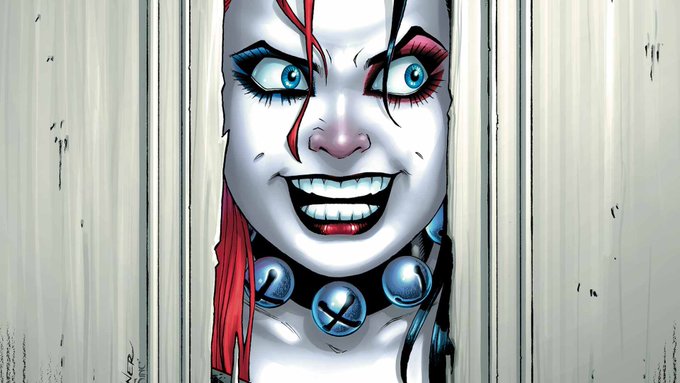Will 'Goddess of Death' Cate Blanchett solve Marvel's female supervillain problem?
Ben Child
Tuesday 1 August 2017 12.41 BST
W
hen it comes to truly splendid villains, there’s nothing like a dame. From Tilda Swinton’s icy, curdled charisma in The Lion, the Witch and the Wardrobe (2005) to Margaret Hamilton’s cackling Wicked Witch of the West in the classic 1939 version of The Wizard of Oz, female baddies are more than capable of holding their own in terms of offering up sheer, undiluted evil. Which makes it all the more disappointing that there have been so few in the superhero genre. Sure, there’s been the odd juicy role – Michelle Pfeiffer as Catwoman in Tim Burton’s Batman Returns (1992) or Marion Cotillard as Talia al Ghul in Christopher Nolan’s The Dark Knight Rises (2012). But more often than not, Hollywood’s standard approach towards gender comes into play, and the best supervillain parts go to male stars.
Even so, Cate Blanchett was still shocked to discover that she is playing Marvel’s first major supervillain in the forthcoming Thor: Ragnarok. The Lord of the Rings star will pull on black leathers and oodles of bad attitude to portray Hela, the Goddess of Death, who steals the god of thunder’s magic hammer and throws him out of Asgard in Taika Waititi’s comic-book epic.
“I didn’t realise I was inhabiting the first female Marvel villain on screen,” the Australian Oscar-winner told E! Online. “I thought: ‘Surely not … Well, no, actually that’s true.’ There’s been many, many, many [female villains] in the comic books, but they’ve been a little tardy in bringing them to the screen, so hopefully there will be a lot more villainesses.”
Marvel has long been criticised for a failure to capitalise on the publisher’s rich history of female characters. We are still without a Black Widow movie, despite Scarlett Johansson having proved her chops as a leading action star in Luc Besson’s Lucy (2014) and The Avengers films. (Let’s not mention Ghost in the Shell.) And it looks as if we’ll have to wait until at least 2019 for the period-set Captain Marvel, with another Oscar-winner, Brie Larson, in the title role. Karen Gillan’s Nebula, from the Guardians of the Galaxy movies, is probably the highest-profile female baddie in the Marvel Cinematic Universe (MCU), yet the freaky cyborg is far from an A-list player. 20th Century Fox’s X-Men movies have a far higher quotient of female mutants, from Jennifer Lawrence’s Mystique to Sophie Turner’s Jean Grey. The latter could yet get her chance to bring on the evil in a big way when Grey becomes Dark Phoenix in the latest adaptation of the comic-book storyline. Lawrence will also return, but you wonder why, with the Oscar-winner’s indisputable star power, she hasn’t been offered her own film.
DC has done rather better than Marvel in terms of female baddie representation, yet it was responsible for the abominable Catwoman (2004), and has failed to make the most of its female antagonists since the establishment of the DC Extended Universe. Cara Delevingne’s horribly wooden Enchantress would have been the worst thing about Suicide Squad (2016) if it had not been for the movie’s treatment of Harley Quinn – ably essayed by the excellent Margot Robbie, but reduced here to a dumb gangster’s moll and subjected to the constant leer of the camera. Let’s not even dwell on the decision to have Batfleck punch her out.
DC owner Warner Bros has rather redeemed itself with this year’s Wonder Woman, which is being tipped for an Oscars run, and Viola Davis’s Amanda Waller has potential if future film-makers can make more sense of the Machiavellian arch-manipulator than Suicide Squad’s David Ayer managed. But fans of Quinn have expressed disappointment that two proposed movies featuring the lovable supervillain – a Joker and Harley movie and the long-mooted Gotham City Sirens– were not part of the studio’s recent slate reveal at Comic Con. Let’s hope a timely recent tweet from Ayer means those projects have not been shelved.
If her performance in the trailers for Ragnarok is anything to go by, Blanchett has every chance of doing for female Marvel villains what Gal Gadot’s Wonder Woman did for DC’s female heroes. It is hard to imagine many actors getting away with uttering the cringeworthy line “I am the Goddess of Death” without finding the moment immortalised in snide YouTube highlight reels. This is dialogue on a level with amateur pantomime, yet Blanchett delivers it like Lady Macbeth on steroids.
The Thor movies are responsible for Marvel’s best big-screen villain to date – Tom Hiddleston’s deliciously devious Loki – but also the MCU’s worst, in the form of Christopher Eccleston’s absurd dark elf Malekith in Thor: The Dark World (2013). (Eccleston, it must be noted, has complained that many of his scenes were cut.) But it looks as if Hela means business. Not only will the events of Ragnarok see her taking away Thor’s hammer, but she seems to be hellbent on draining all life from Asgard and rebuilding it in her own deathly image.
How that affects the rest of the Nine Realms, including our own Midgard (Earth) remains to be seen, but as if destruction is on the cards. Might Hela, who in the comics has a passionate bond with Infinity War’s chief baddie Thanos, have a future to play in the MCU beyond Ragnarok? On early evidence, Marvel would be crazy not to try to find a way of keeping Blanchett involved. She’s a class act, and can put to rest any lingering doubts about the pulling power of female stars in Hollywood.
In Norse mythology, Ragnarök means “twilight of the gods” – the death of all things, followed by rebirth and renewal; the dawn of a new world. With a little luck, Blanchett’s turn in the big-screen version might help bring about its own lasting transformation.
THE GUARDIAN




No comments:
Post a Comment